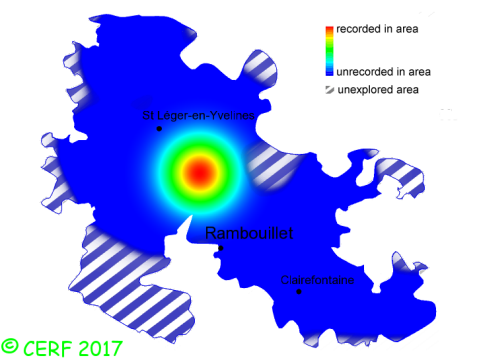|
Agaricus cupreobrunneus (Jul. Schäff. & Steer) Pilát
|
New classification: Basidiomycota/Agaricomycotina/Agaricomycetes/Agaricomycetidae/Agaricales/Agaricaceae
Former classification: Basidiomycota/Homobasidiomycetes/Agaricomycetideae/Agaricales/Agaricaceae/Agariceae
synonyms: Psalliota cupreobrunnea, Psalliota campestris-cupreobrunnea
edibility : edible
|
|
|
The cap is copper-brown to vinaceous brown.
its texture is fibrous.
The gills are free, crowded .
The spore print is purple brown. This species is saprophytic.
It grows on the ground.
The fruiting period takes place from June to November.
| Dimensions: | width of cap approximately 7 cm (between 3 and 10 cm) |
| | height of stem approximately 5 cm (between 3 and 9 cm) |
| | thickness of stem (at largest section) approximately 15 mm (between 8 and 20 mm) |
Chemical tests : no reaction to Schaeffer's test.
Agaricus cupreobrunneus is rare and confined in the forest of Rambouillet, and is quite rare, more generally speaking
.
|  | | Above : distribution map of Agaricus cupreobrunneus in the forest of Rambouillet |
|
page updated on 14/01/18
